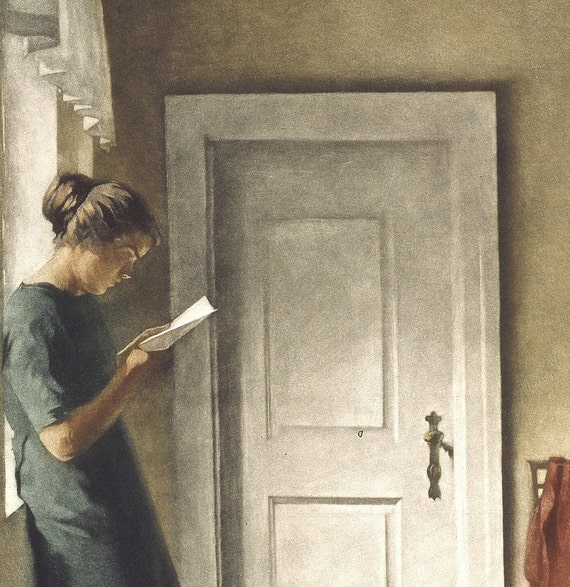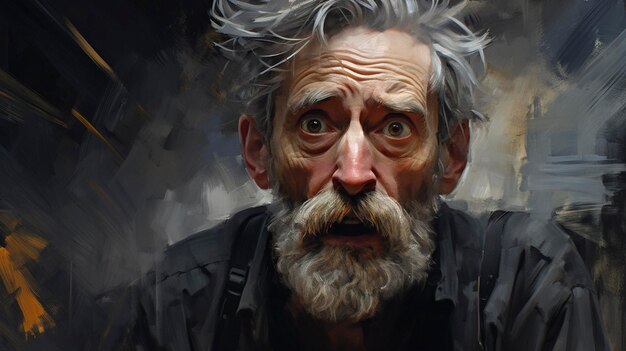How Figurative Oil Painting Transforms Conventional Artistic Expression
How Figurative Oil Painting Transforms Conventional Artistic Expression
Blog Article
The Evolution of Figurative Oil Paint: Comprehending Its Historical Significance and Modern Interpretations
The evolution of metaphorical oil paint works as a compelling lens whereby to take a look at the interplay between imaginative expression and historic context. From the careful naturalism of the Renaissance to the emotive power of the Baroque, each era has actually contributed layers of meaning and strategy to this ageless medium. Contemporary musicians, attracting from this rich heritage, are now reinterpreting the human number in methods that challenge traditional stories. As we check out these improvements, one must take into consideration exactly how the dialogue in between past and existing informs not just artistic practice yet also societal representations in an increasingly complex world.
Beginnings of Figurative Oil Paint
The beginnings of figurative oil painting can be traced back to the very early Renaissance in Europe, specifically in the 15th century. The growth of oil paint allowed for higher depth of shade and information, boosting the realistic look and vibrancy of their work.

In this transformative age, figures were frequently portrayed within contextually rich environments, showcasing not just their physical qualities however likewise their psychological states. Pioneers such as Jan van Eyck and Titian used the tool's adaptability, utilizing layering methods to achieve luminance and appearance. This advancement helped with the portrayal of detailed materials and the subtleties of complexion, adding to the growth of portraiture and narrative scenes.
Additionally, the Renaissance focus on humanism promoted a recognition for individuality, which in turn affected artists to develop more vibrant and relatable figures - figurative oil painting. Consequently, figurative oil paint became an effective car for narration and psychological engagement, laying the foundation for future creative movements and designs
Key Historic Movements
Considerable historical activities have formed the development of figurative oil paint, each contributing one-of-a-kind ideologies and methods that expanded the tool's opportunities. The Renaissance marked an essential moment, stressing realism and the human type, with artists like Leonardo da Vinci and Michelangelo pushing the borders of anatomical accuracy and point of view. Following this, the Baroque age brought dramatic contrasts of light and shadow, exemplified by Caravaggio, that instilled religious styles with extreme emotionality.
The 19th century presented Romanticism and Realistic look, where musicians such as Delacroix and Courbet tested classic perfects, concentrating on private expression and day-to-day life. The introduction of Impressionism better revolutionized the medium by highlighting the results of light and color, resulting in a departure from standard depiction.
In the early 20th century, movements like Expressionism and Cubism redefined figurative paint via abstraction and the expedition of psychological deepness. Each of these movements not only reflected the societal modifications of their times yet additionally laid the groundwork for contemporary interpretations. The interaction in between these historic activities has actually developed an abundant tapestry of viewpoints and styles, influencing contemporary artists in their quest of catching the human experience on canvas.
Methods and Materials Development

Throughout the Baroque period, strategies such as chiaroscuro and sfumato emerged, boosting the psychological resonance of metaphorical structures. Artists started to explore glazes and impasto, adjusting texture and luminance. By the 19th century, technologies like the usage of pre-mixed paints in tubes revolutionized access, enabling artists to paint en plein air and capture the short lived effects of light.
The 20th century experienced the intro of synthetic pigments and tools, which broadened the palette and changed the consistency of oil paints. Moreover, the exploration of brand-new application techniques, such as combination blades and brushes of varying tightness, more diversified creative expression. Collectively, these innovations reflect the progressing connection in between products, techniques, and the creative vision intrinsic in metaphorical oil paint.

Contemporary Interpretations
Contemporary analyses of metaphorical oil paint show a vibrant discussion in between custom and advancement, where musicians challenge established norms and explore diverse themes. This evolution manifests in numerous means, as modern musicians mix classic methods with contemporary ideas, typically dealing with social, political, and personal narratives.
Many practitioners attract inspiration from historic jobs, yet they instill their items with contemporary perspectives, using the human type as a lorry for commentary on identification, sex, and culture. Artists significantly experiment with abstraction, distortion, and combined media, which enables a wider interpretation of the figure and its context.
Additionally, using brilliant color palettes and unique compositions frequently offers to interfere with standard watching experiences, provoking critical interaction from target markets. This change in focus prolongs past aesthetic appeals; it mirrors an expanding recognition of the intricacies of human experience in an interconnected globe.
As figurative oil painting remains to develop, it stays an important medium for discovering the Your Domain Name nuances of contemporary life, personifying both a regard for heritage and a commitment to modern idea. The result is an abundant tapestry of expression that resonates go to the website with the complexities of the modern human condition.
Influence On Modern Art
The effect of metaphorical oil painting on modern-day art is profound, as it has actually continuously motivated a myriad of imaginative activities and techniques throughout the 21st and 20th centuries. From Expressionism to Surrealism and past, the exploration of the human number has actually continued to be a main theme, enabling musicians to convey intricate feelings and stories. This emphasis on metaphorical depiction has caused a re-examination of traditional techniques, resulting in cutting-edge techniques that mix realism with abstraction.
In addition, contemporary musicians have actually embraced figurative oil paint as a way to resolve social and political problems, using the tool to challenge perceptions of society, identification, and sex. The renewal of rate of interest in figurative operate in recent years mirrors a wishing for connection in an increasingly electronic globe, where human experience and feeling are critical.
Furthermore, the discussion between metaphorical oil paint and modern art appears in the jobs of artists Read Full Article such as Kehinde Wiley and Jenny Saville, that make use of historic references while instilling their items with contemporary importance. Eventually, figurative oil painting remains to shape and redefine modern imaginative expression, emphasizing its enduring value in the art world.
Verdict
The development of metaphorical oil painting highlights its historic relevance and flexibility throughout different artistic activities. From the naturalism of the Renaissance to the stirring expressions of the Baroque and the ingenious techniques of modernity, this medium has continually changed. Contemporary interpretations reflect dynamic colors and unique structures, promoting vital engagement with political and social motifs. Ultimately, metaphorical oil paint continues to be an important medium for discovering the human experience, reverberating profoundly in today's digital landscape.
The evolution of figurative oil paint offers as an engaging lens via which to analyze the interplay between artistic expression and historical context.Substantial historical motions have actually shaped the evolution of figurative oil paint, each adding special viewpoints and techniques that expanded the tool's opportunities.As historic activities formed the trajectory of figurative oil painting, the methods and products employed by artists have also gone through considerable improvements. figurative oil painting.The influence of metaphorical oil paint on contemporary art is extensive, as it has actually continuously motivated a myriad of imaginative activities and methods throughout the 21st and 20th centuries.The development of figurative oil painting underscores its historical importance and adaptability across various imaginative motions
Report this page